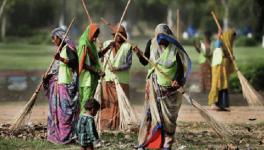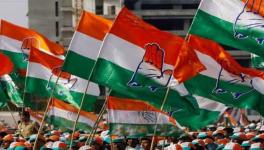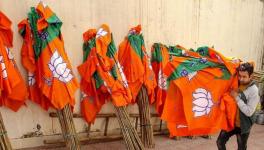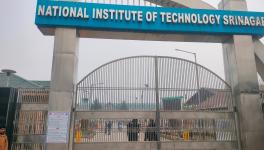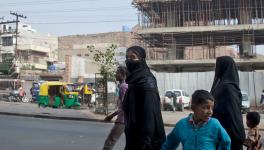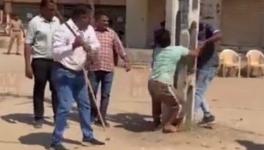What a Hindu Guardian of a Muslim Tomb Says About Today’s India
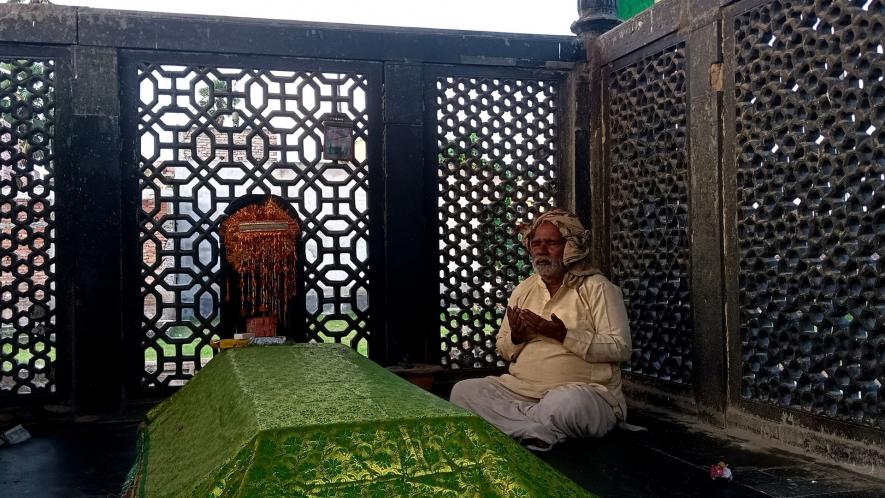
In the easternmost corner of Bihar’s capital, Patna, lies Begampur, a locality named after the mother of Bengal’s last independent Nawab, Siraj ud-Daulah. It was once a bustling area where chiefly Muslims lived. But a walk through Begampur today would reveal no co-religionists of those residents of yore—they left during the bitter Partition or in the bloody run-up to that catastrophe.
The only reminders of Begampur’s earlier inhabitants are the ruins of a mosque, a few scattered graves, and a tomb dating back to the 18th century.
One of those tombs is of Siraj ud-Daulah’s father, Zain ud-Din Ahmed Khan, who was given the title of Haibat Jung. In 1748, Khan met his end at the hands of Afghan rebels.
You would think many in Patna would visit Khan’s tomb. After all, when he was Governor of Bihar in the 1740s, he bravely defended Patna against Maratha raids. But his tomb has been ignored for decades by Muslims and Hindus alike. It has been forgotten by all except one man, Dashrath Gope, who, for 48 years, has practically never left Khan’s side.
Gope found the tomb as a youngster when he was in its vicinity, with two friends. It was then concealed under dense undergrowth. One of his friends noticed some beautifully carved jaali work—a fabled Mughal-era stone curtain—peeking through the shrubbery. Astonished by the discovery, Gope ran home and returned with a sickle and an axe.
“It took four months to clear the bushes and remove the big plants that covered the tomb,” says Gope. Once the tomb was fully rescued from the wild, he was so impressed with the structure that he went around asking elders in the locality about who lay buried within. “They told me it was Nawab Shaheed ka Maqbara—the tomb of the martyred Nawab,” Gope says. “Since then, it has been a part of my daily routine to come and light candles on his grave,” he adds.
For 48 years, Gope has guarded the Nawab Shaheed from dawn to dusk and it has earned him both friends and foes.
Gope’s selfless service to the tomb, which to him represents the heritage of his city and his locality, strikes a stark contrast to the environment in the country today. Attacks on Muslim places of worship are routine, as are lynchings of Muslims because of their identity. The numerous calls to dig up Muslim graves or for their economic boycott; apart from forcible evictions of the community from their homes, could not change Gope’s point of view. He has remained unhesitatingly devoted to protecting and preserving the Nawab’s abandoned tomb—and his city’s rich multilayered past.
When he found it nearly 50 years ago, the tomb, though it had been erected on an elevated platform, was concealed by overgrowth. Not far were some fields and vegetable patches. The land on which the tomb stands is registered as a Waqf property, but the Waqf Board has shown no interest in protecting or conserving it and its surroundings.
“This was a huge complex, but the mosque is the last building still standing,” recalls Gope. He also remembers seeing a large entrance with minarets and jharokhas—covered balconies that were a feature of later Mughal constructions, and widely adopted across the northern plains till today. “The area must have housed a palace of the Nawab,” says Gope, pointing at the remains of the entryway that is now partially abandoned, while the rest has become part of somebody’s newly-built home.
But Gope bears no ill will to the workings of time and history. All he wants is for people to know and respect this tomb for its historic significance.
“When I was young, I towed thelas through Patna city. I was unaware of the history of this site,” Gope says. Through seeking answers from locals and beyond, he discovered that the Nawab Haibat Jung ‘palace’ is a fine example of later Mughal architecture. It was a roofless structure that was decaying through years of neglect and exposure to harsh weather.
Initially Gope went house-to-house in Begampur, asking residents to contribute to a Rs 1,200 fund to install an asbestos shed over the tomb. “I had no money, so I had to beg! With my meagre savings, I bought lengths of bamboo to support the roof,” he says.
People would promise to help but back out at the last moment—until another local, also a Hindu, Arvind Pal, came to the rescue. Pal paid for the asbestos sheet, but the tomb still needed a fixed roof. “I started collecting bricks, and after 11 years, I finally could place a roof over the grave of Nawab Saheb,” Gope says, a combination of pride and sadness in his eyes.
Gope cannot help but find his success bittersweet. His efforts to revive a dying structure were nothing less than heroic. Some people from Begampur came forward to help him, donating sand or cement. But some residents called him terrible names.
“I have been called names I cannot repeat,” says he.
Once, Gope brought two green flags—the kind that often adorn mazars—and affixed them at the gates of the tomb. An engineer from the vicinity came and tore them down while Gope watched helplessly. The engineer threatened Gope that he would be killed if he tried installing the flags again.
“I experienced what hundreds of Muslim families feared when they left Begampur for good,” Gope says. He is referring to the migration of Muslim families as India gained Independence.
“The situation would have been different if Muslim families still lived here. The mosque would have been saved from ruin, and the imam-bara—the site for mourning the martyrdom of Imam Hussain during Muharram—would have been standing,” he says.
Gope’s 48 years of experience as a Hindu preserving what many Indians now consider solely ‘Islamic’ heritage, has given him unique insight into the present as well as the past. He says, “The migration of Muslims from India was not merely because of the Partition. It was the result of the fear generated by the Bihar riots of 1946,” he says.
“More than a few Muslim families remained in this area during Partition. They would hold gatherings during Muharram at the Imambara beside the tomb. But the Bhagalpur riots in 1989 and riots after [the Babri Masjid was demolished in] 1992 became the two final nails in the coffin. After these, Begampur was completely abandoned of its Muslim residents—except in name,” he says.
But it is not all bleak, perhaps. As he spoke to this writer, two Hindu women walked into the tomb, seeking out the deceased Nawab Shaheed, whom some locals now seem to view as one who can impart blessings.
But the political situation still has Gope fearing dark times ahead. “We have stopped seeing people as humans. The hate I have experienced as a Hindu guarding the grave of a Muslim Nawab is enough to show how tough times are,” he says.
Once, Patna residents believed that their city would remain safe no matter what happens, but seeing is believing, is it not? “And there is a huge difference between what we say and what we see. If it were really safe, the Muslims would have continued living in Begampur,” Gope says, just as the sun disappears behind the ruins of the mosque.
The author is a theatre artist, activist and student of preventive conservation. The views are personal.
Get the latest reports & analysis with people's perspective on Protests, movements & deep analytical videos, discussions of the current affairs in your Telegram app. Subscribe to NewsClick's Telegram channel & get Real-Time updates on stories, as they get published on our website.










